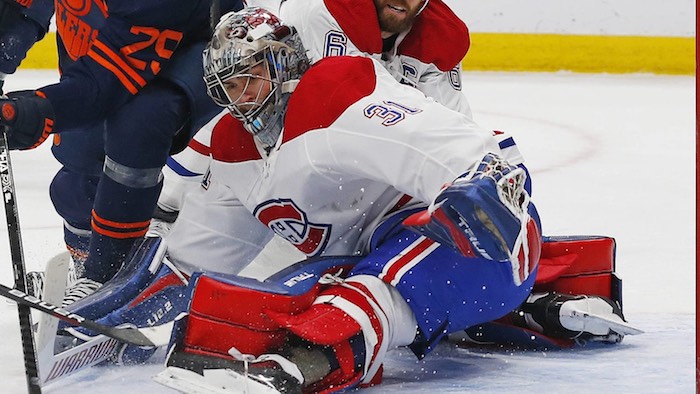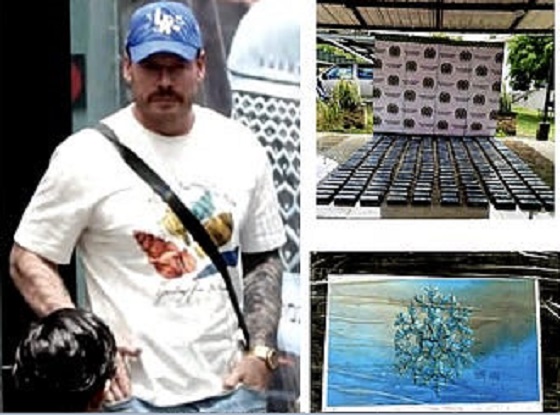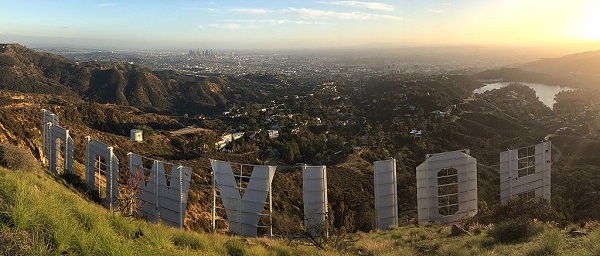Bruce Dowbiggin
Cash & Carey: Flames Salary Cap Shuffle Obscures Price Reduction

Sign up today for Not The Public Broadcaster newsletters. Hot takes/ cool slants on sports and current affairs. Have the latest columns delivered to your mail box. Tell your friends to join, too. Always provocative, always independent.
The derring-do of Calgary Flames GM Brad Treliving has been justly noted the past week. Faced with losing two franchise players in Johnny Gaudreau and Matthew Tkachuk for nothing— while also balancing a precarious salary-cap crunch— Treliving turned the departures of the two 40-goal scorers into gold. He:
1) traded forward Tkachuk for Florida star winger Jonathan Huberdeau plus Top 4 defence man MacKenzie Weegar.
2) Extended Huberdeau, who tied Gaudreau with 115 points last year, for eight more years.
3) Dumped oft-injured centre Sean Monahan to Montreal, cutting his $6.375 annual cap hit
4) Thus freeing up cap space to sign free agent/ Stanley Cup winner Nazim Kadri for seven years.
5) Still has cap and depth to make more moves. Bookies now have the re-made Flames as favourites to repeat as Pacific Conference champions with a vastly overhauled roster.

Lost in this whirlwind shuffle was the news from Canadiens GM Kent Hughes that Montreal’s star goalie Carey Price was likely to miss most, or all, of next season with a bad knee. Habs fans certainly are devastated. Could it be the end for Price, whom many call the best goalie of the 2005 NHL Draft and his generation?
If he plays no more Price’s stat line is still impressive. 712 GP/ 361 wins/ 2.51 GAA/ 0.917 save percentage. In 2015 he ran the table with the Hart, Vezina and Lou Marsh Awards. Gold medal at the 2014 Olympics and 2016 World Cup. And, playing in Montreal always helps brush up your HOF resumé. In our book Inexact Science (ECM Press) we write, “While other players have certainly enjoyed more team success, few from 2005 have enjoyed the individual honours and respect from their peers and opponents that Carey Price has…”
But wait a minute on those claims of him being the uber-goalie. “While our re-draft of 2005 has Price going after Jonathan Quick, it’s a close race considering Quick has less individual hardware and has dropped off in recent years. (He rebounded with a stellar 2022 playoff series versus Edmonton in which Quick reached first place first place among American goaltenders in playoff shutouts.)

But Quick’s two Stanley Cups—especially his 2012 Conn Smythe Trophy showing—give him the edge as the most accomplished goalie from this particular draft year. Even if, arguably, his overall talent and technique are not superior to Price’s, his peak proved more productive, more significant and more legendary.
Plus, he had to fight to reach his esteemed position in the league after being an unheralded third-round pick seven years prior to his 2012 triumph. Let’s say he won the battle if not the PR war with Price.
Price, on the other hand, will have to rack up several appearances and wins for another few years before his Hall of Fame case becomes ironclad. That said, no one in their right hockey mind should argue that a goalie from that same draft, such as Tuukka Rask or Ben Bishop, would have been a better investment for Montreal. While those two have a combined three finals appearances to Price’s zero, their individual awards case isn’t quite as stocked either.”
What’s ironic is that, at the time of the 2005 Draft, NBC analyst Pierre McGuire sourly said of the Price selection, “This is not a fit for Montreal…” Canadiens fans and NHL followers in general were critical of the choice upon its announcement, given the team’s needs at that time. A minority of fans to this day feel the Habs would have been better off taking a strong two-way centre in Anze Kopitar. After all, goalies don’t have to be generational to lead a team to a Cup, whereas legendary centres don’t just fall off trees—something Montreal fans should be well aware of since the retirement of Jacques Lemaire in 1979…
As McGuire pointed out at the time, Montreal’s netminding inventory was already well stocked… as they owned former Vezina and Hart Trophy winner Jose Theodore plus future number one netminders Cristobal Huet (acquired that draft weekend from the Kings in return for backup and once heir-apparent Mathieu Garon) and Jaroslav Halak. But Montreal still lacked a goalie with the pedigree of a true franchise backstop, something Theodore had provided in glimpses between 1997 and 2004 but usually followed up with disappointing seasons
As it was, “Theo” hit the skids again after the Price selection, struggling badly enough to be traded away to the Avalanche for David Aebischer with just a month to go in the 2005–06 regular season. All of a sudden, Price went up a tick in the Habs’ goalie system. In the next year and change, Price would claim a World Junior gold medal, a Calder Cup and the American Hockey League playoff MVP award (Jack Butterfield Trophy). This was all accomplished less than two years after his selection, we might add. As teenage goalies go, it was a rise not seen since the days of Patrick Roy.
A few months after his AHL glory—and just a month after he turned 20—Price made the big club and then was crowned the starter leading up the 2008 playoffs. He has yet to lose control of the number one job since, all the while setting franchise records for the NHL team with perhaps the richest goaltending history of them all.
While he gets flak for their Cup-less years of frustration, one can point to the inequalities of the rest of the roster and poor goal support come playoff time as the more obvious culprits (for example, Price posted a 1.78 GAA in the 2020 playoffs, yet only sported a record of 5–5 because his team could barely generate more than two goals per game and were shut out twice along the way).”
Considering Price’s impact on the NHL only reinforces the scene-stealing performance by Treliving in re-tooling his team in a time of salary caps and free agency. Which headline will still be the biggest story in retrospect probably depends on the 2022-23 Flames season.
Bruce Dowbiggin @dowbboy is the editor of Not The Public Broadcaster (http://www.notthepublicbroadcaster.com). A two-time winner of the Gemini Award as Canada’s top television sports broadcaster, he’s a regular contributor to Sirius XM Canada Talks Ch. 167. Inexact Science: The Six Most Compelling Draft YearsIn NHL History, , his new book with his son Evan, was voted the eighth best professional hockey book of by bookauthority.org . His 2004 book Money Players was voted seventh best, and is available via http://brucedowbigginbooks.ca/book-personalaccount.aspx
Bruce Dowbiggin
Burying Poilievre Is Job One In Carney’s Ottawa

The Liberals’ first budget under Mark Carney— about nine months overdue— snuck through Parliament with Green Party leader-of-one Elizabeth “Margarita” May as the deciding vote. (All it took was a commitment to her insane climate targets.) A quick review of the Book of Revelations does not reveal this as a sign of the Apocalypse. But to Canadians who voted for a change in the spring it’s a rude reminder that no one is minding the store in Ottawa.
The Parliament Hill media has largely shelved discussion of Carney’s budget ‘guzintas (the PBO said there is a “less than 10 percent chance the government will keep its deficit-to-GDP ratio on a downward track through 2029-30… and Finance Canada has “changed its reporting of deficit financing, separating capital from operational spending.”) Translation: If Carney keeps on this track till 2030 the total GST collected from Canadians will not be enough to service the federal debt.
The chattering class is, however, full speed ahead on their Pierre Poilievre deathwatch. The leader of the CPC is one of their more anodyne figures to lead a party since Mackenzie King. His earnest kitchen-table schtick is about as dynamic as a cheese sandwich. Even when he famously defenestrated a blundering BC journalist in an apple orchard he never raised his voice. (What page am I taking from Trump’s book?”)

In the House of Commons, he has performed a monotone strafing of Liberal policy since becoming leader in 2023. He hasn’t elbowed aside a female NDP member. In the fine tradition of the House he does mock the Liberals front bench, throws water on their fevered policies and acts like a vice-principal of a small high school disciplining a student.
But in the judgment of today’s febered media— okay, the Liberals— he’s “rage-farming” or “rage-baiting” when pointing out that Canada’s debt is out of control, its real estate is a bubble waiting to burst and the relationship with the U.S. is flat lining. In fact he’s all rage, all the time, for their purposes. According to Carney’s bots, Poilievre stoops “to stirring and riling up ‘white-trash’ elements in society into hateful rhetoric against the prime minister. “
Team Carney has gloried in his travails since Donald Trump upended the spring election by cozying up to Carney. (Poilievre didn’t help himself taking pot shots at Trump who then dismissed Poilievre). CBC/ CTV/ Global savants who spit every time they mention Trump bizarrely were suddenly in enthusiastic approval of Orange Man Bad spanking PP for them.

The tone about his performance as opposition leader is vitriolic. “Pierre Poilievre’s rage-baiting and empty slogans aren’t what Canada needs”. His slogans (stolen by Carney during the election campaign), his by-election win in Alberta, his insistence on core issues— it drives the panelists on talk shows to fits for pique.
Which is funny when you think about it. Those with longer memories can recall the hijinx of the Liberals’ Rat Pack in the 1980s and 90s. Led by Sheila Copps (dubbed Tequila Sheila by Tory justice minister John Crosbie), Don Boudria and John Nunziata they were an early version of Polievere and Melissa Lantsman and the CPC front bench. Just more obnoxious.
Except the wind therapists were amused by them. Instead of rage monkeys they were the subjects of puckish CBC features. Copps could speak Italian with her (Hamilton) constituents and also had “perfect French,” said reporter Jason Moscovitz.” But she needles Mulroney in plain English,” he added, as Copps introduced a question for Brian Mulroney by comparing him to to Johnny Carson.
The irreverent Rats even produced their own T-shirts to wear in the House. “Other MPs say he’s sleazy, slimy, and a snake,” said Moscovitz, of Nunziata as he donned one of the T-shirts. So Nunziata used the same words in the House of Commons.”Sleazy, slimy Tory patronage!” he proclaimed on the floor of the House.

Laugh? We could have died. It was entertaining in the collegial debating club of the time. The sparring of the feisty Copps and her target John Crosbie was mint.
But now that the Liberals are entering a second decade of mismanaging the nation, their appetite for impertinence has disappeared. So the clever ripostes of Copps are now Poilievre “rage” farming and “rage baiting”. Some people have noticed the contrast: “Caucus unrest treated as a calamity when it involves the Conservatives, while Liberals get a pass” But the bubble-bound Canadian public only hears one slant.
In the U.S. there are hopeful signs of a bubble breakthrough. Hip TV host Bill Maher was forced to tell Woke comedian Patton Oswalt that his BlueSky world was strangling him. He enlightens an oblivious Oswalt on the UK grooming gangs. He also brought him up to reality when Oswalt said the Left never orders gender off of passports.
It’s not much, but it’s hopeful, at least in America. Here in Canada the information corridor is so thoroughly policed by the culture Stasi (using their dreaded Trump guns) that nothing can get through. Singing O Canada and not abusing the lyrics is considered a sacrilege on the Left. Daniel Smith is a Trumpist etc. Carney is intent on importing British hate speech convictions, not AI chips and nuclear energy.
If that isn’t enough of a bummer remember that Carney is just a stop-gap, a guy to rag the puck for a few years till the Liberals have groomed Justin’s eldest for the PMO. Where he can complete the Woking of traditional Canada that Grandpapa Pierre started in 1968.
Bruce Dowbiggin @dowbboy is the editor of Not The Public Broadcaster A two-time winner of the Gemini Award as Canada’s top television sports broadcaster, his new book Deal With It: The Trades That Stunned The NHL And Changed hockey is now available on Amazon. Inexact Science: The Six Most Compelling Draft Years In NHL History, his previous book with his son Evan, was voted the seventh-best professional hockey book of all time by bookauthority.org . His 2004 book Money Players was voted sixth best on the same list, and is available via brucedowbigginbooks.ca.
Bruce Dowbiggin
Sports 50/50 Draws: Make Sure You Read The Small Print

Throughout the recent World Series baseball fans were regaled with the exploding total in the Blue Jays World Series 50/50 draw. When the L.A.Dodgers finally subdued the Jays in the seventh game the total had skyrocketed to a whopping $50,020,115— half of which was won by a fan from Oshawa, Ont.
That means that $25,010,055 was donated to Jays Care Foundation which then sends money to worthy charities and causes supported by the Blue Jays. A number of those charities are identified by the team in its publicity. Win/ win, right?
Should be. But how much of the $25,010,055 devoted to charities and sports organizations goes to administer the draw? We examined the rules printed online and the financial records to see the distribution of those funds. “At Jays Care, every dollar of net revenue, after prize payouts and raffle-related expenses are deducted, goes directly to supporting kids in Jays Care programming.”
To the unwashed public that says that $25,010,055 is going completely to the charities;. Wait, they said “net revenue” and “raffle-related expenses” Okay, what constitutes net revenue? What are raffle-related expenses? In the 2024 statements for Jays Care Foundation, general and administration total is $324,321 after raising $21,234,364 . Seems like to might be worth noting.
This is not to suggest that the Jays Care lotteries are not what they seem on the surface. Or they do not have a charitable component. We have been unable to find any reporting on the draw that implies or states something shady. Or any reporting from Toronto’s vast media mob into just how these draws work. Still, the public should know how much of the prize money they’re donating goes to the charity. Because you won’t get it from listening to the team games on TV which marvel at the 50/50 amounts.
The Jays’ draw is worth noting, because there have been questions raised about other large sports 50/50 draws. The charity in charge of the Edmonton Oilers 50/50 raffles paid more than $81 million in lottery funds over four years to Win50, a sports betting and gaming company controlled by the Oilers Entertainment Group, according to audited financial statements obtained by the Investigative Journalism Foundation.

The IJF found that only 19.6 percent of the 50/50 raffle proceeds went to charity in 2024. The Oilers did not deny the claim, but did say that the charitable aspect of the draws and the publicity they generate far outweighs the costs in running the draws. “By focusing on expense ratios and purposely ignoring the millions of dollars in legitimate operational costs covered by WIN50, the IJF misleads readers about our how our 50/50 operates and our overall charitable impact.” Weak sauce, no?
Sources who spoke to us said that, in one case a capture of $550K returned just 10 percent— $55K— to their charity. The rest disappeared to pay bills and distribute funds as the organizers saw fit. Oh, and the charities must sign NDAs to keep their status as Oilers’ charities. There may be some legitimate reasons for the silence so far on the draws. But that was not communicated by the Oilers to their fans up front or in their response to the IJF.
It is reminiscent of stories we wrote for the Calgary Herald in the early 2000s about shady practices surrounding NHL oldtimers versus cops or fireman hockey promotions. Until we made it public the companies running the ticket sales oversold the arenas, created fictional handicapped children for donations, returned as little as five percent to charities and more— while never telling the NHL stars about the deception.
The other telling aspect of this Oilers Care story is that it was generated by an independent journalism source— not the main Edmonton media. The IJF is not likely to be getting seats on press row at the Rogers Centre any time soon with this kind of aggressive reporting.
With sports teams now partnering with broadcast and print partners, doing this kind of investigative work will not advance your career. We should know after enduring years of the cold shoulder for our reporting corruption in the NHL under Alan Eagleson and the league (Eagleson went to jail briefly for his fraudulent use of NHL Players Association and Hockey Canada funds.)

Rogers now has its name on numerous arenas and stadia across Canada. It controls MLSE, owners of the Maple Leafs, Raptors, Toronto FC and the Argonauts. Former journalists work for team owners. The government sends “support” money to so-called private broadcasters and newspapers to toe the line. As we wrote in October the PR pitch for Elbows Up has been everywhere in Canadian sport.
“Rogers Media is running commercials during the Blue Jays AL Divisional Series boasting in Liberal red and white “Proud owners of Canada’s national team”. (What team owner has ever put itself above the title on a sports team?) If you haven’t caught that ad there are others Rogers’ ads extolling its magnificence in giving Canada the highest telephone bills this side of Botswana. Oh wait… They say, Go Jays Go, Canada’s national team. Sorry about that.
The team’s announcers are also reading verbatim prefab slugs about the story of the Blue Jays “not being written yet.” (We counted three doing the hype before Gm. 1 of the World Series) Watching the proud-as-punch onslaught from the team’s owner one would think this has to be more than Vlad Guerrero uber alles.”
Watching the willful denial of Canada’s legacy-media death throes is reminiscent of when the big automobile companies were challenged by smaller, more efficient Asian imports in the early 1970s. The Detroit big shots tried ignoring them, then actively enlisted government to stop them. Then, with bankruptcies impending, they copied them. The car market finally became a freer market in North America.
The media elites are at the stage where they’re begging government to excuse their inefficiencies and corruption versus “uncouth” independent media. The protectionist racket won’t work any better than it did for the car makers. The question now is will they accept the ultimate solution of sharing the field with social media and doing that kind of reporting again? Because, without that reckoning they won’t be here to greet the 2030s.
As Mark Hebscher concludes in his new book Madness, “In the end it’s not so much the stories being covered as the stories being missed.”
Bruce Dowbiggin @dowbboy is the editor of Not The Public Broadcaster A two-time winner of the Gemini Award as Canada’s top television sports broadcaster, his new book Deal With It: The Trades That Stunned The NHL And Changed hockey is now available on Amazon. Inexact Science: The Six Most Compelling Draft Years In NHL History, his previous book with his son Evan, was voted the seventh-best professional hockey book of all time by bookauthority.org . His 2004 book Money Players was voted sixth best on the same list, and is available via brucedowbigginbooks.ca.
-

 Business2 days ago
Business2 days agoCanada is failing dismally at our climate goals. We’re also ruining our economy.
-

 Health2 days ago
Health2 days agoCDC’s Autism Reversal: Inside the Collapse of a 25‑Year Public Health Narrative
-

 Health2 days ago
Health2 days agoBREAKING: CDC quietly rewrites its vaccine–autism guidance
-

 Daily Caller2 days ago
Daily Caller2 days agoBREAKING: Globalist Climate Conference Bursts Into Flames
-

 Alberta2 days ago
Alberta2 days ago‘Weird and wonderful’ wells are boosting oil production in Alberta and Saskatchewan
-

 Crime2 days ago
Crime2 days agoCocaine, Manhunts, and Murder: Canadian Cartel Kingpin Prosecuted In US
-

 Energy2 days ago
Energy2 days agoHere’s what they don’t tell you about BC’s tanker ban
-

 Business11 hours ago
Business11 hours agoNew airline compensation rules could threaten regional travel and push up ticket prices









